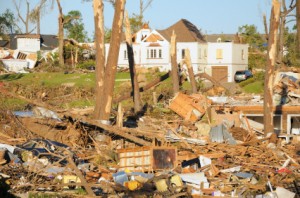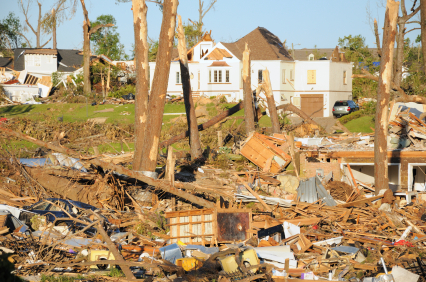 The Property Casualty Insurers Association of America is offering home and business owners a list of steps to take immediately prior to and following a hurricane.
The Property Casualty Insurers Association of America is offering home and business owners a list of steps to take immediately prior to and following a hurricane.
The organization wants to help residents in hurricane-prone states make preparations for the threat of devastating storms.
The National Oceanic and Atmospheric Administration predicts a very active storm season with three to seven major hurricanes and the PCI recommends that homeowners, businesses and public policymakers take the necessary steps to ensure that everyone is prepared.
The PCI offers the following tips and brochures on how consumers can reduce their exposure to losses and make sure they have adequate insurance coverage to recover from the economic damage after a catastrophic event.
1. Review your property insurance policy, especially the “declarations” page, which summarizes the coverage you have purchased.
2. Talk with your agent/insurer to make sure you have the right policies with adequate limits. Your agent or insurance company can assist you in determining the type of policies you should have and the correct limits of coverage.
3. Get flood insurance. Inland flooding can occur as far as 500 miles from the site of a hurricane. Flooding is not covered in standard homeowners insurance policies. However, it may be purchased through insurance agents from the National Flood Insurance Program, which is administered by the Federal Emergency Management Administration.
4. Make sure you know the amount of your deductible. The deductible is the amount of loss that the homeowner must pay. It may be based on the value of your home or a fixed dollar amount.
5. Purchase insurance well in advance of a storm. Most insurers will not offer insurance after a hurricane watch or warning has been issued. The NFIP also has a 30-day waiting period before the policy is effective.
6. Inventory household items now to speed up claims processing after the storm.
7. Store important documents where they will stay safe and dry.
8. Develop an emergency plan before the emergency. Determine escape routes, establish a meeting place, stock non-perishable emergency supplies and a disaster supply kit with enough food and water for three to seven days. When severe weather is approaching your area, listen carefully to local authorities and take the necessary precautions to protect yourself, your family, and your property.
9. Perform routine home maintenance now to avoid major repairs later. Mitigation is a critical component in reducing the amount of damage that may occur when a hurricane or tropical storm makes landfall.
10. Don’t make your house a target for debris. Protect your property by covering all windows with plywood or shutters, moving vehicles into the garage when possible and placing grills and patio furniture indoors.
The association also offers several brochures on surviving hurricanes and major storms:
“The Seven Ways To Safety,” discusses the seven most important features that home and business owners should inspect to ensure that their structures are wind-resistant. These include: roof-deck attachment, secondary water barrier, roof covering, gable end bracing, foundation-wall-roof connections, opening protection and garage doors.
“A Do-It-Yourself Wind Inspection,” provides detailed information on the three key steps involved: inspecting roof shape, inspecting roofing, and inspecting windows, doors and garage doors.
“Three Ways In Three Days,” provides three simple and effective storm-proofing techniques that can easily be done in a weekend. They include: picking up items that could become wind-borne debris, trimming trees and using a caulking gun to adhere trusses to roof decking.
“Insurance Coverage,” defines key terms such as deductibles, actual cash value, replacement cost coverage, functional replacement cost and also reiterates that flood damages are not covered under standard homeowners policies.
“Blowing Away The Myths,” addresses four common myths about what individuals should do immediately prior to or during a storm.
“Steps Before And After A Storm,” provides very practical steps to help individuals stay safe and quickly return to daily life after a catastrophic event.












